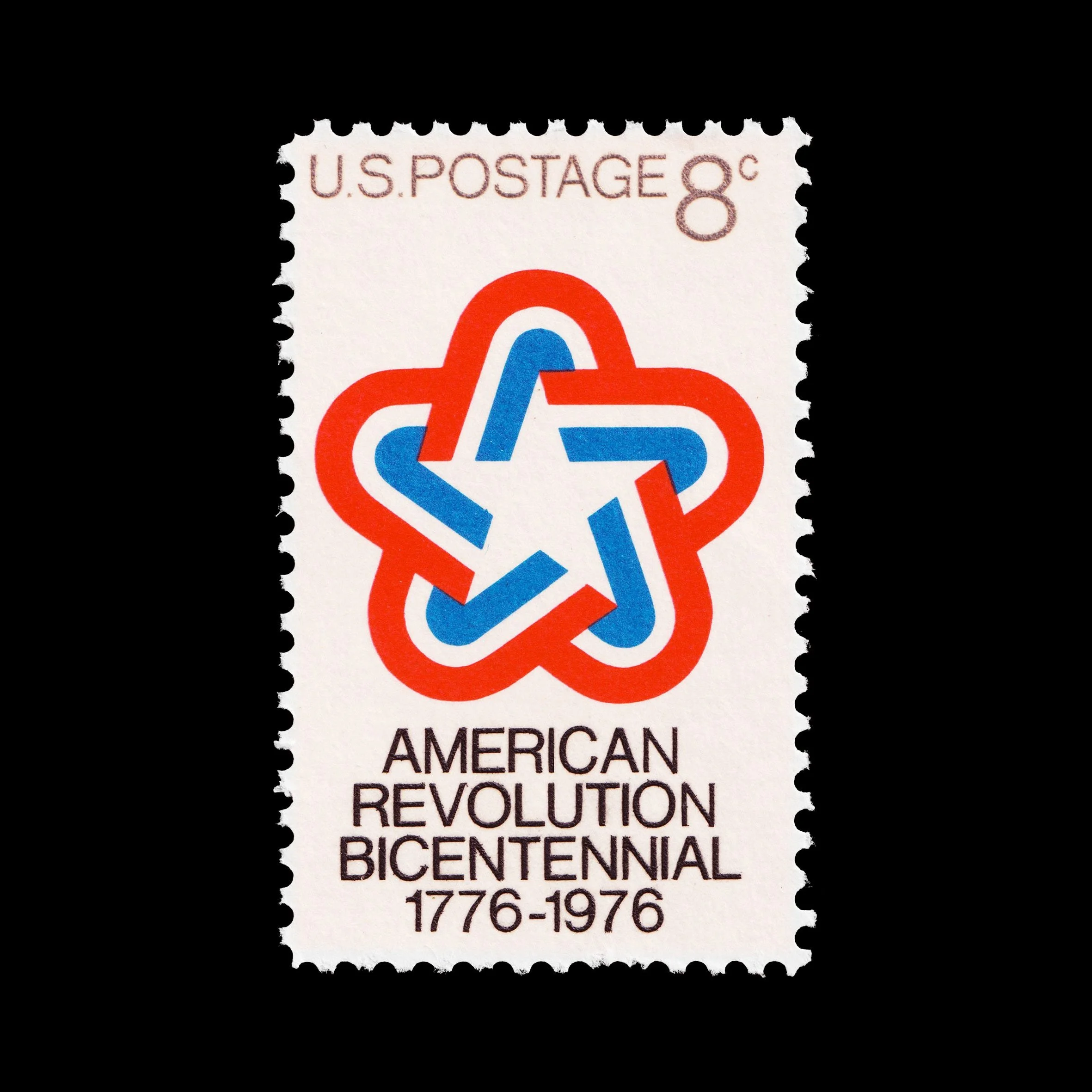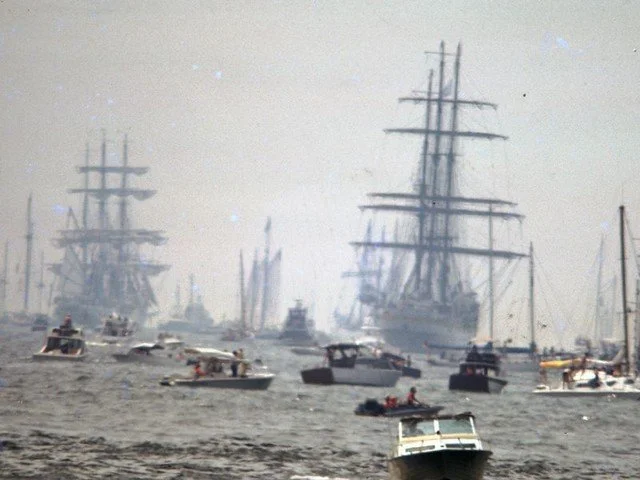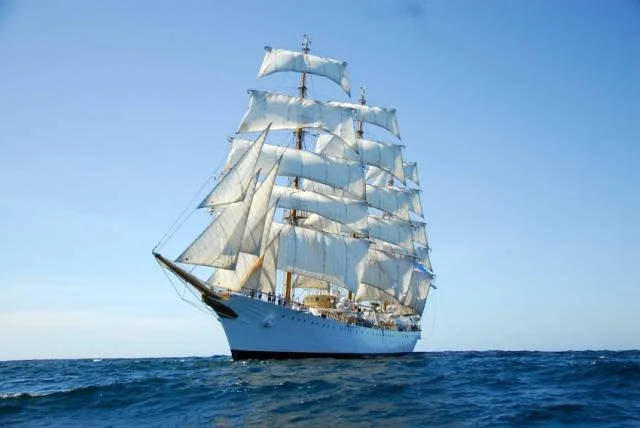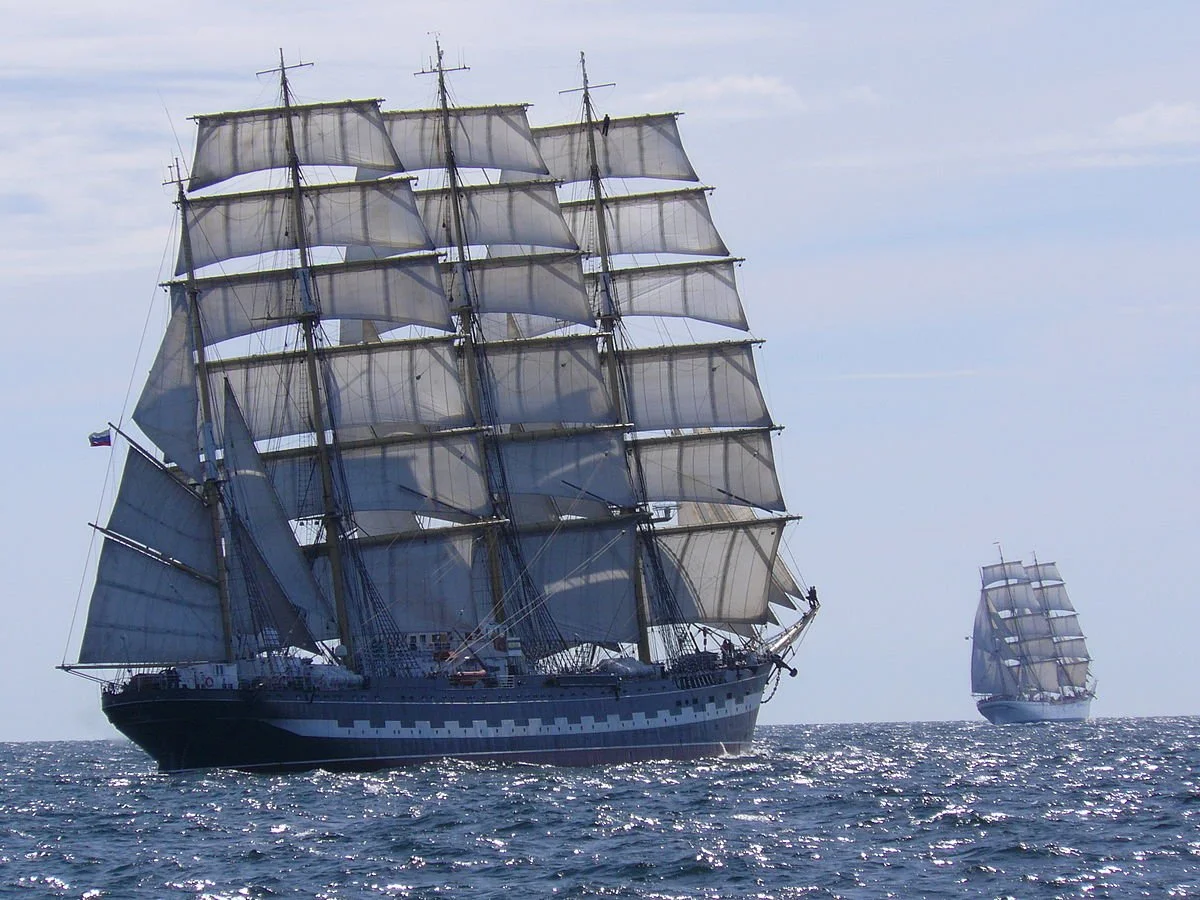WHEN THE TALL SHIPS SAILED
DECEMBER 16, 1973 — BOSTON HARBOR — On the 200th anniversary of the Boston Tea Party, protestors descend on the celebration demanding "environmental protection, racial justice, an end to corporate profiteering. . ." Several throw empty oil barrels into the harbor. Others hang President Nixon in effigy. America’s Bicentennial is off to a bad start.
With the full Bicentennial looming, America is in no mood to party. Just 5,000 watch the “Battle of Concord,” half that for Paul Revere’s ride. Meanwhile, every last product is branded “Official Bicentennial. . .” Beach towels, billiard balls, even Bicentennial bull semen — "Buy six quarts and get the seventh FREE!” — with a picture of George Washington. Is America no better than this?
“The Bicentennial,” one historian notes, “shares two attributes with death and taxes: It is inevitable, and it is uneasily anticipated.” And then the Tall Ships set sail.
Operation Sail had been JFK’s idea. “We are tied to the ocean,” the ex-Navy lieutenant said, “and when we go back to the sea — whether it is to sail or to watch it — we are going back whence we came.”
To foster international cooperation, the president dreamed of nations sending their magnificent sailing ships around the world. He did not live to see his dream fulfilled. The first Tall Ship parade, just a dozen vessels, visited New York harbor for the 1964 World’s Fair. But by 1976, in the wake of Vietnam, Watergate, and a spreading malaise, that year seemed from another country.
Oil shocks. Double-digit inflation. Revelations about CIA coups and FBI dirty tricks. The malaise was deepening. Coins were minted, stamps issued. A Freedom Train took the Declaration of Independence on tour. But come July 4, many dreaded the day. And no one was prepared to see history itself unfurl.
Operation Sail’s brochure called them “square rigged school ships,” but sailor and novelist Joseph Conrad gave them their more enduring name. “In a gale,” Conrad wrote, “the silent machinery of a sailing-ship would catch not only the power, but the wild and exulting voice of the world’s soul.” Even their terminology stirred the spirit. Brigantine. Barque. Schooner. Gaff rigs and topmasts and foresails. Shiver me timbers. The past never had such a noble advance guard.
In mid-June 1976, sixteen Tall Ships gathered in the Canary Islands, then raced across the Atlantic to Bermuda. Moving north as a single flotilla, they approached Long Island and dropped anchor in Gravesend Bay. Towards noon on July 4, as small parades and fireworks across America held their breath, the Tall Ships entered New York Harbor.
Sailing past the Statue of Liberty, escorted by a thousand small craft, with fire hose flares from tugboats, with brass bands blaring onshore, the US Coast Guard’s Eagle led the parade. Nearly 300-feet long, with three masts topping 140 feet, the Eagle was followed by the Juan Sebastian de Elcano, a 370-foot barque from Spain. Then came Argentina’s Libertad, a 340-foot brigantine. And England’s HMS Churchill, sailed by an all-female crew.
The USSR had been talked into sending its massive Kruzenstern, nearly 400-feet long with masts that soared to the sky. And here it came, past the Twin Towers, sailing as if the czar himself had sent it.
These were “storybook vessels,” the Christian Science Monitor noted. “They remind us of a time when man, not machine, did most of the work.” None were as old as they looked. Built to train sailors in timeless traditions, most dated only to the 1930s, yet that hardly mattered to a hundred thousand lining New York harbor, nor to the millions watching at home as Walter Cronkite, an inveterate sailor of small vessels, reported from the deck of the USS Eagle.
The Tall Ships crested the tip of Manhattan, then docked at various ports. The next day, tens of thousands boarded to stroll the wooden decks and gaze upward at the rigging. Then the ships sailed on, to Newport, to Boston, finally to Philadelphia before each headed for home ports.
Though America was in no mood to party, the Tall Ships saved the Bicentennial from its own bull. “We were all so jaded,” one woman remembered, “but we were able to savor each one of the ships.” Fireworks fizzled. Red-white-and-blue products went unsold. But “did you see the Tall Ships?”
A decade later, the ships returned for the centennial of the Statue of Liberty. And they will return again in 2026 for the nation’s 250th birthday. Who knows what mood we’ll be in, but the Tall Ships will be ready, as Joseph Conrad knew.
“Whether she ran with her tall spars swinging, or breasted it with her tall spars lying over, there was always that wild song, deep like a chant, for a bass to the shrill pipe of the wind played on the sea-tops, with a punctuating crash, now and then, of a breaking wave.”













